by Alex Dueben
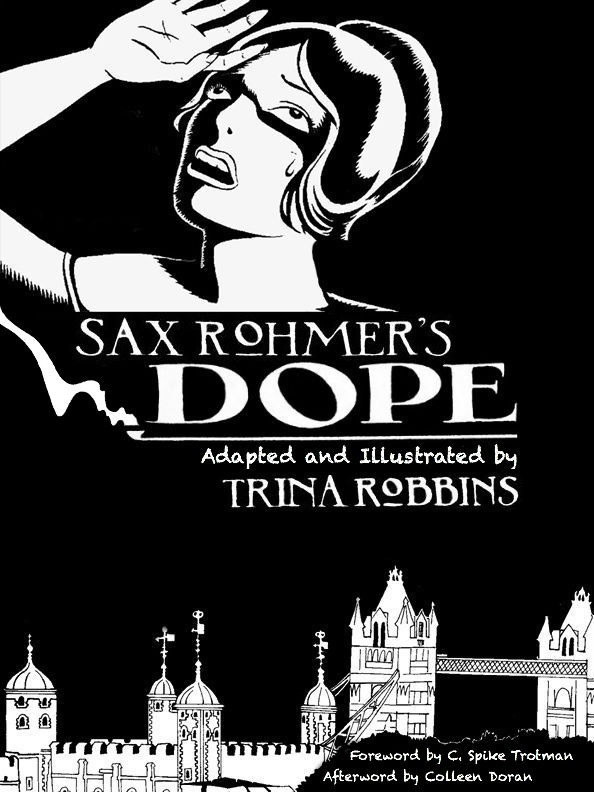
Most recently, Robbins announced a new release for Dope, an adaptation of the Sax Rohmer novel that Robbins wrote and drew between 1981 and 1983 for Eclipse and Eclipse Monthly. The book has never been collected and is being published by IDW’s It’s Alive imprint with a kickstarter (Robbins’ first) for an edition of the book. Just back from the San Diego Comic-Con, Robbins spoke about Dope, Eclipse Comics, what Wonder Woman meant to her, and the process of adapting her father’s book.
Dueben: How do you describe Dope?
Robbins: It’s a comic adaptation of a very pulpy novel from 1919 by the very well known pulp writer Sax Rohmer. It’s intriguing because it’s about drugs, it’s about opium, it’s also about cocaine and veronal. It’s about the drug underworld of the early 20th Century and opium dens and there’s so much in it. Drew describes it very well in the kickstarter. He says something like a beautiful actress becomes addicted to drugs in the underworld of London in the early 20th century.
Alex Dueben: What made you interested in adapting Dope to comics?
Trina Robbins: This goes back to 1970 or 1971. There was a science fiction and fantasy bookstore in San Francisco and they were closing and so they had a huge sale where everything was one dollar. I knew who Sax Rohmer was. He was a great pulpy writer in the early 20th Century who wrote the Fu Manchu series. I saw this book in huge letters: DOPE by Sax Rohmer and it was only a dollar so I bought it. When I finally read it I thought, this would make such a great comic. Then Eclipse invited me into Eclipse Magazine and I thought, all right, I’ll serialize Dope.
Dueben: I only know Sax Rohmer as the writer of Fu Manchu but the racial politics of the book is fraught and I’m sure you were very conscious of that.
Robbins: I talk about that in the introduction, believe me. It has to be written about. When people talk about the racism in older books they have to think about the context and the fact that racism simply existed in those days and nobody questioned it. You can’t do a book like Dope without the racism that’s in it. I don’t give away too much but the Chinese character Sin Sin Wa is definitely a criminal–he has an opium den. His way of talking and acting seems very stereotypical of that period of how they stereotyped Chinese people, except that he is not what he seems.
I’m a fan of World War II comics and the way that those comics treated Asians is just completely bizarre. The Japanese are drawn as inhuman monsters with coke bottle glasses and huge buck teeth and sometimes even fangs and claws. The Chinese people are also drawn very stereotypically except because they were on our side, they look nicer. But both the Chinese and Japanese are colored yellow. Yellow! There were these racist stereotypes that existed in those days and you have to deal with it.
Dueben: You serialized Dope in Eclipse Magazine and Eclipse Monthly over a couple years. You did a few projects with Eclipse over the years.
Robbins: They were great. They were really inclusive and they were willing to take chances. I have nothing but the fondest feelings towards Cat [Yronwode] and Dean [Mullaney]. I worked with Dean later. He was my editor when I did the collected Miss Fury and he did a gorgeous job on that book.
In a desperate attempt to revive comics for girls in the eighties I had gotten Jim Shooter to let me agree to do a six part miniseries for Marvel, Misty. It failed miserably simply because it just didn’t get any distribution at all. In those days if you wanted to buy a comic, you had to go into a comic book store which was wall to wall boys and they didn’t want to carry anything for girls. Though I used to get manilla envelopes stuffed with letters from girls who loved Misty. They said I love your comic but I have such a hard time finding it. When that ended I went to Eclipse with a proposal to do a comic for girls and they took the chance. We did eight issues of California Girls and it finally failed for the same reason–the comic book stores simply wouldn’t carry it. Dean and Cat were always taking chances. They were really good about that.
Dueben: In the eighties, you were writing and drawing longer stories like Dope, you adapted one of Tanith Lee’s novels, you made a Wonder Woman miniseries. And then you stopped drawing. Why?
Robbins: Eclipse was no longer in existence, Wimmen’s Comix folded, I wasn’t being published anywhere. There were a whole new group of publishers and new group of artists and they didn’t seem interested in me. Underground comics and I had never really matched. What I did was not like what the other underground people did. I felt that no one wanted me. There were new women cartoonists and none of them were getting in touch with me. I felt that I was over the hill. It got to the point where when I attempted to draw, I couldn’t. I just got really depressed and had anxiety and so I just stopped. I couldn’t do it. Luckily I was writing. I always got much better reactions from the things I wrote than from what I drew and I always loved writing. I don’t miss not drawing.
Dueben: This is the 75th anniversary of Wonder Woman and there are a lot of reprints coming out but they haven’t announced The Legend of Wonder Woman which you co-wrote and drew.
Robbins: No, they’re not [rereleasing the book] but I’m absolutely delighted to be writing Wonder Woman again. I’m so happy when I’m writing Wonder Woman and when it’s out I reread it. It’s so good.
Dueben: You wrote for Wonder Woman ’77.
Robbins: I wrote for Sensation Comics and then I wrote for Wonder Woman ‘77 and then I have another one coming out in September.
Dueben: If the movie does well and they keep reprinting comics, hopefully they’ll get to your series soon. What has the character meant to you?
Robbins: I’ve been a Wonder Woman fan since I was a little girl. She’s different from the other superheroines. She’s got this mythic side to her. She’s an Amazon. She simply is feminist–despite the fact that sometimes she isn’t feminist because whoever is writing or drawing her just doesn’t get it. Or sometimes doesn’t like her. But she is a feminist character. She’s an Amazon princess! If you read Joseph Campbell the mythic hero–and not just in Greek mythology, but in world mythology–is usually born from a virgin mother and a deity father. The mythic hero is usually a demi-god. Wonder Woman is a demi-god but she’s created by her mother Hippolyta, who molds her out of clay, and Aphrodite, who breathes the breath of life into her. So both of her parents are female. How much more feminist can you get!
Dueben: It’s interesting reading the original comics and she has this crew of woman and she’s empowering them. I don’t think they used that term then, but that’s what she was doing.
Robbins: Of course she was. The Holliday Girls are great sidekicks. And Etta Candy is small and fat and tough and what a good image for girls.
Dueben: I know that Dope isn’t your only book coming out in 2017. What else are you working on?
Robbins: I have four books coming out in 2017. One of them is Dope. One is my memoir. One of them is my father’s book.
Dueben: Can you talk a little about his book, A Minyan Yidn?
Robbins: My father came from a small village, a shtetl, in what is now Belarus, what was then Russia. He came to America at the age of 16. He wrote in Yiddish for the Yiddish language newspapers in New York–for which he never got paid–and he wrote a book in 1938 in Yiddish. As a kid I knew my father had written a book but I didn’t care because it wasn’t in English. If anything I was ashamed that my father wrote in Yiddish because it meant he wasn’t American. I wanted to be American. I was unappreciative.
Years go by and he dies and I figured the book was lost. It was an obscure Yiddish language book and I’ll never find it or know what it was really about. My wonderful daughter–who is a much better daughter than I was–found it on the internet. It’s been reprinted. You can get it on abebooks. I got a bunch of copies and I had it translated. It’s a collection of short stories. About seventy-five per cent are about the people from his shtel and the other twenty five per cent about Brooklyn and the Lower East Side. Think Fiddler on the Roof and Isaac Bashevis Singer. I thought, this has to be a graphic novel. I adapted the stories into comics form and found twelve wonderful artists.
I really wanted Chagall for the cover, but he’s dead, so my second choice was Barbara Mendes. In the seventies she was known as “Willy.” She and I she contributed almost half of It Ain’t Me Babe Comics which was the first all women’s comic ever. She became a fine artist and she has a fabulous gallery in Los Angeles and she did the cover and it’s so amazing. Hope Nicholson and Bedside Press is publishing it and I’m very excited about it.
Dueben: When you say that you have a great group of artists, you have Leela Corman, Shary Flenniken, Miriam Katin, Steve Leialoha, Caryn Leschen, Sharon Rudahl, and others.
Robbins: They’re great, they’re enthusiastic. They were my dream team and they all said yes.
Dueben: Did you speak Yiddish growing up?
Robbins: Kids who grew up with Yiddish speaking parents usually when the parents are saying something they don’t want the kids to hear or understand they would say it in Yiddish. You can’t help but pick up a little bit. I would never have called myself a Yiddish speaker but I am taking Yiddish classes now. I’m not going to ever be able to read the written language–I’m hopeless at that–but I’m getting the speaking part and I really enjoy.
Dueben: What’s the other book coming out?
Robbins: Babes in Arms. It’s a collection of the work of four Golden Age women cartoonists who drew during the war, Lily Renee, Barbara Hall, Jill Elgin and Fran Hopper. It’s from Hermes Press.
Dueben: Has there been talk of collecting your short work one of these years?
Robbins: No there’s hasn’t. I’m not sure how I feel about that. I look at my early stuff and some of it holds up. Dope holds up. The Silver Metal Lover was good. I think my art and my inking were really good in that period. The eighties were when I think I was really at my best as an artist. But some of the stuff just makes me cringe and I’m not sure I’d like to see it reprinted.
Dueben: Is there anything else you really want to do or are trying to set up right now?
Robbins: There are some early 20th Century women cartoonists who should be collected and haven’t been. Maybe there are other people besides me who would like to collect their work. Surely I’m not the only one. I can think of two immediately–Ethel Hays and Gladys Parker. Ethel Hays did this strip in the late 1920s called Flapper Fanny and she was a fabulous artist, extremely prolific. Besides all these comic pages she drew, she also illustrated children’s books. She’s really good. She eventually passed the strip on.
Gladys Parker took over Flapper Fanny and turned it into a comic, because it had just been a single panel cartoon. Gladys Parker had earlier done a strip called Gay and Her Gang that was a newspaper strip, very flapper, and eventually flappers were passe. She continued to do a comic strip and a single panel cartoon but she changed the name to Mopsy, who was a contemporary woman. The strip lasted through the sixties. Gladys Parker herself fascinates me because not only was she a really good artist but because number one Mopsy looked like her, as did Flapper Fanny. She was a very chic good looking woman with a mop of curly black hair. She was also a fashion designer who had her own line of clothing and her clothing is great. I’ve found a lot of articles about her clothing and designs. She should have a book.
Dope‘s new collection will hit shelves in 2017.


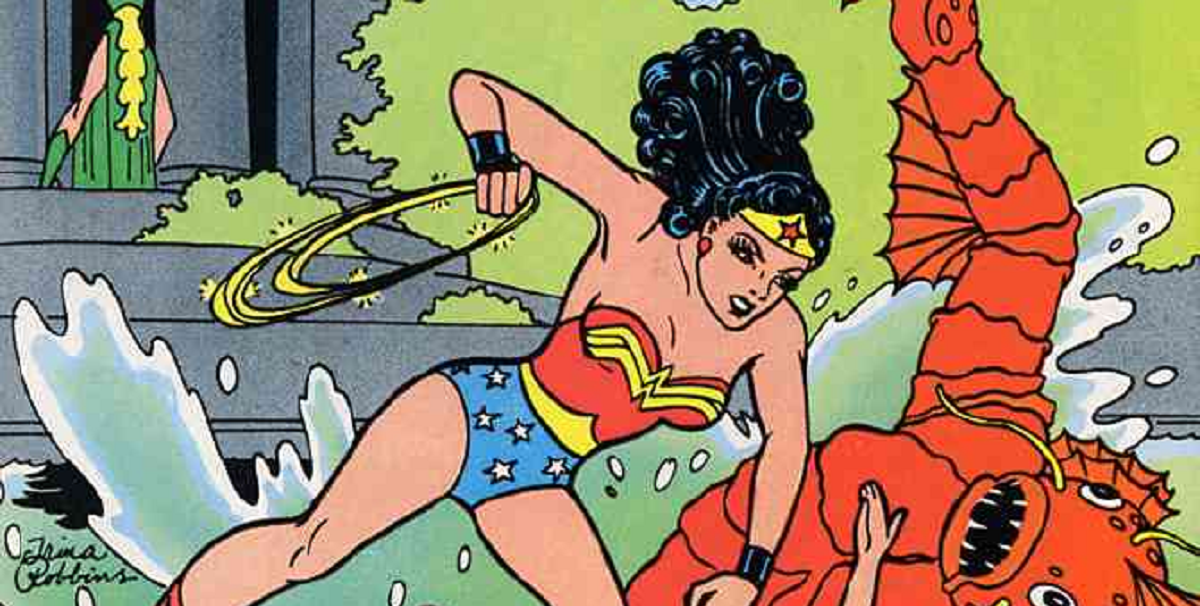
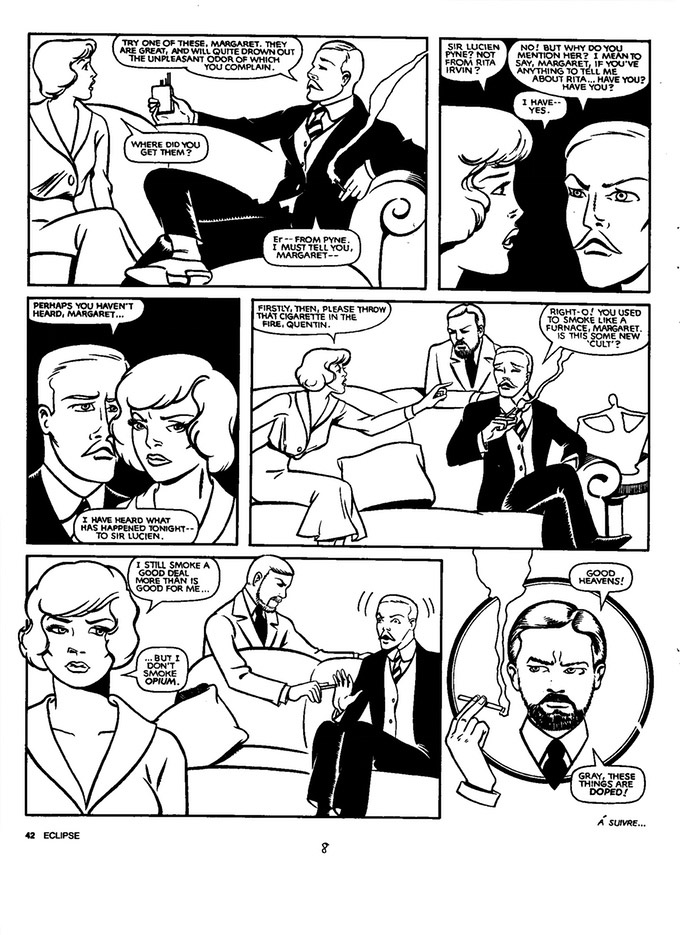
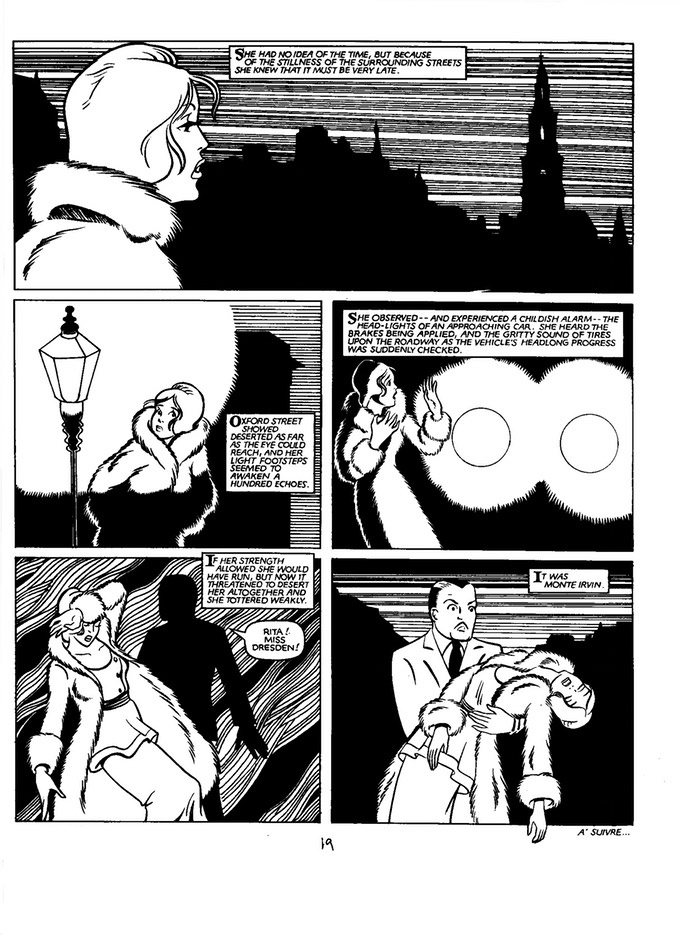
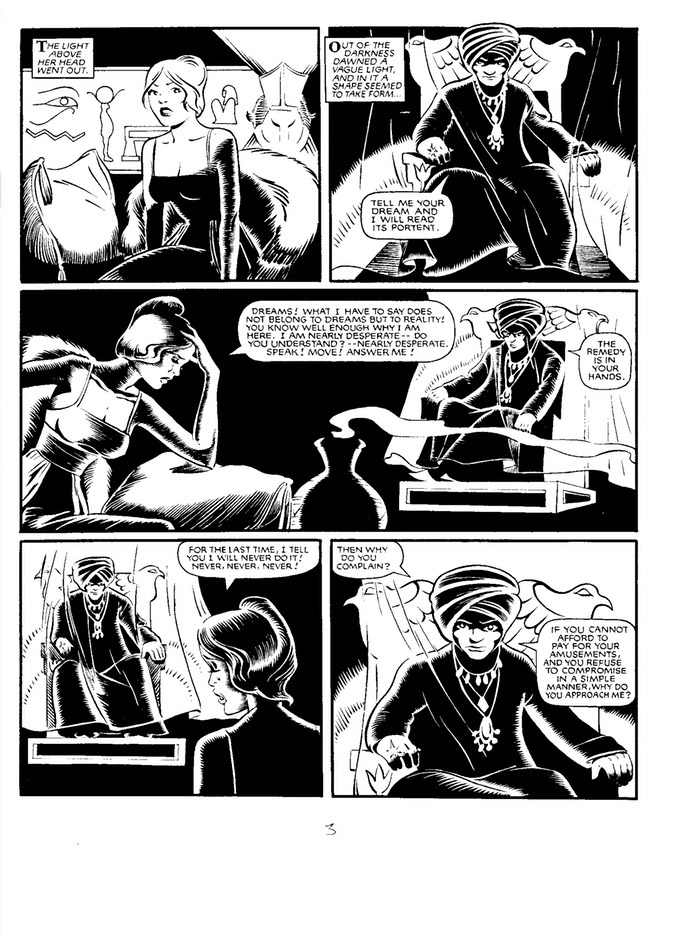
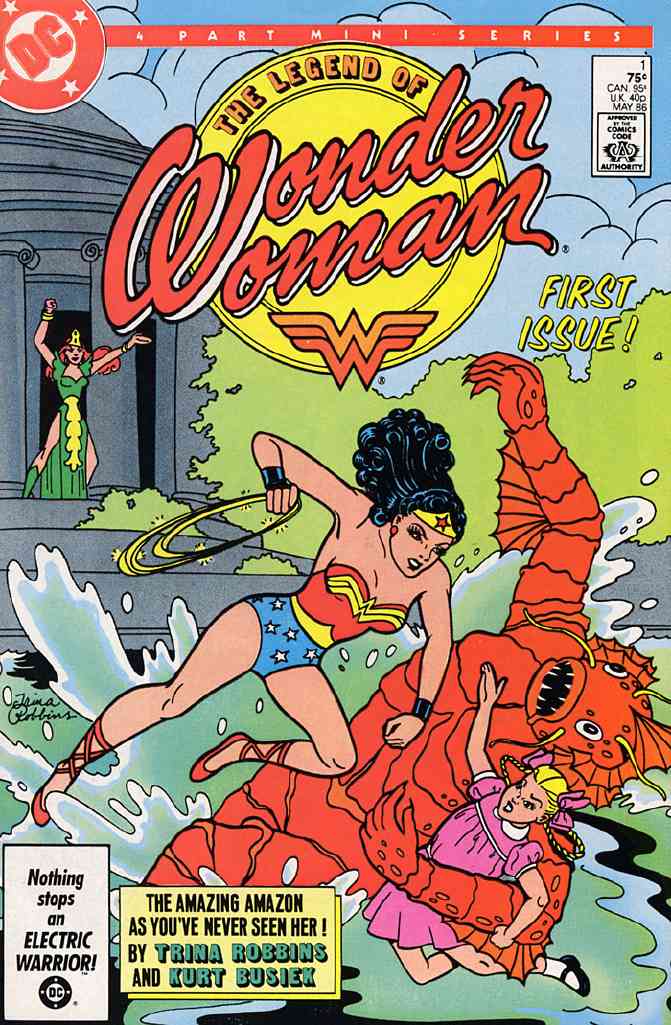
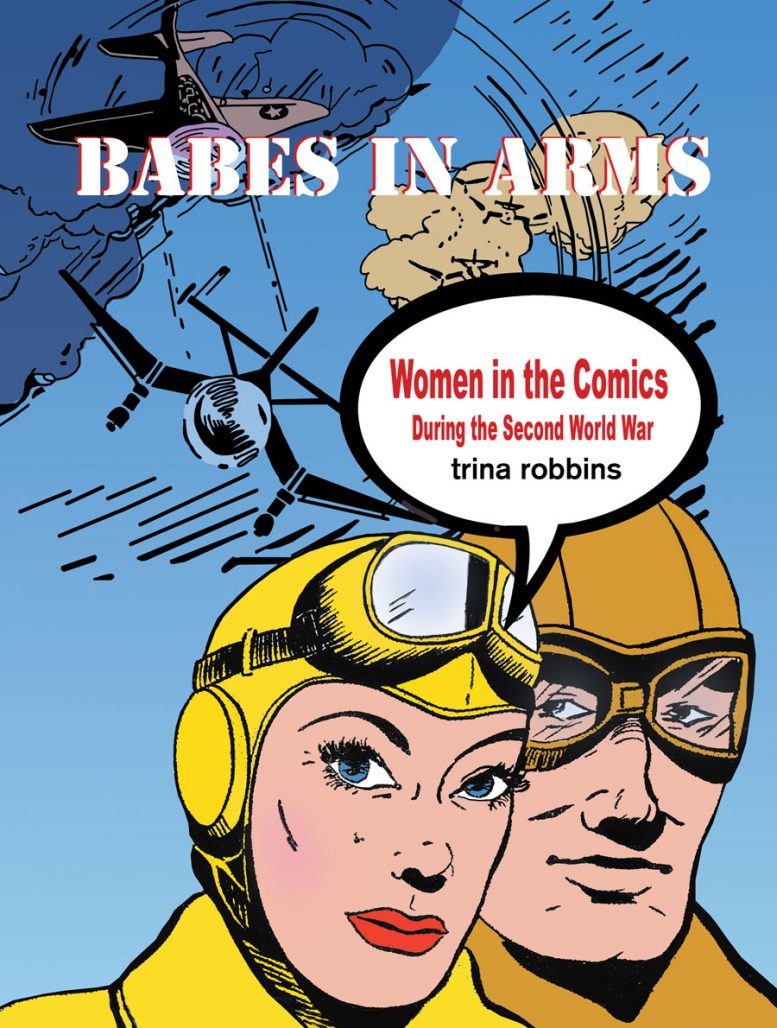



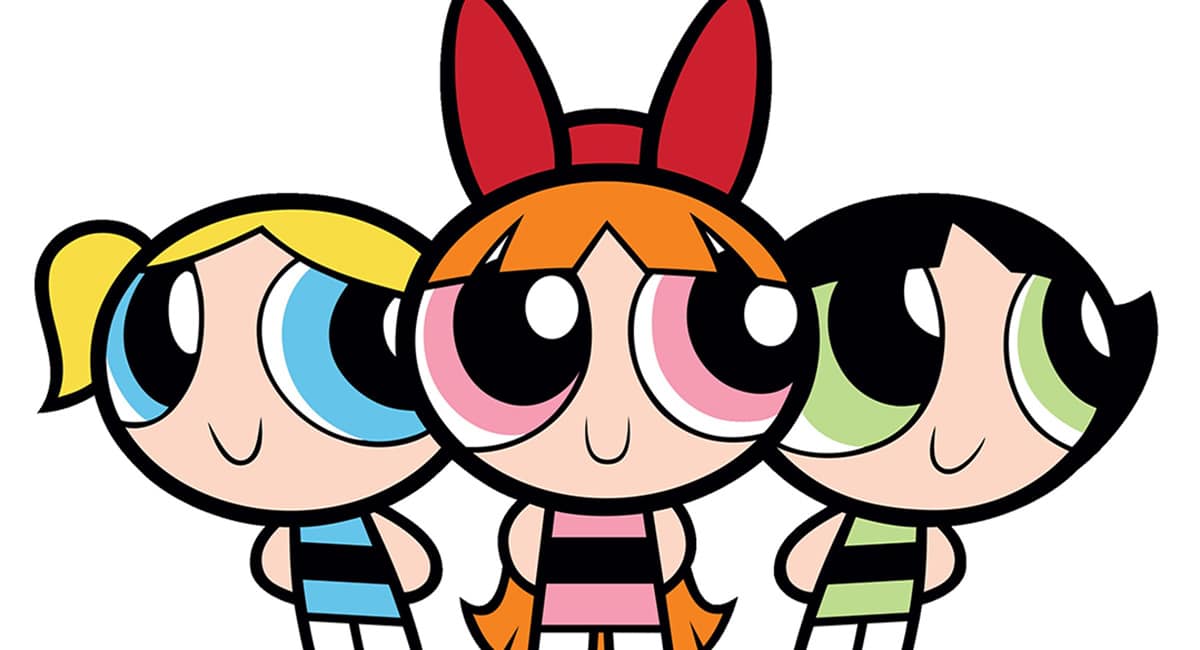

I am looking forward to Trina’s new work.
I am a big fan of the issue’s of Wonder Woman
from back in the day.
I like to see her do an issue of Captain Marvel, or Mary Marvel.
Very nice to see an interview with this great, pioneering woman of the comics. Looking forward to getting A Minyan Yidn. Any book with Shary Flenniken and Miriam Katin has got to be good.
On a side note to the beat Staff, can we refrain using the term “opens up about” in titles and interviews. It reeks of click bait for rancid tales of celebs divorces or feuds. No one should need to be baited to click on an interview with Trina Robbins.
Comments are closed.